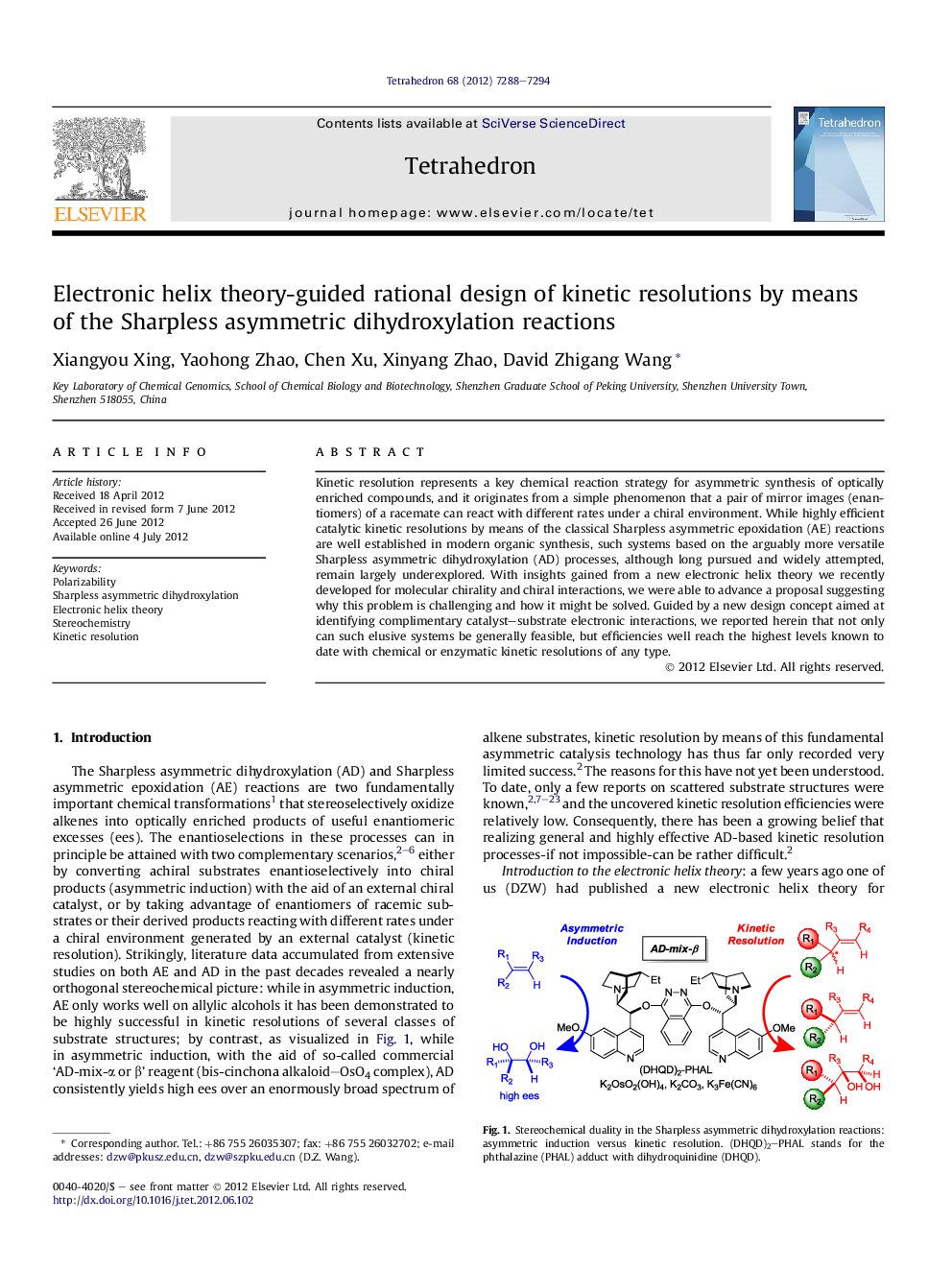| Article ID | Journal | Published Year | Pages | File Type |
|---|---|---|---|---|
| 5220046 | Tetrahedron | 2012 | 7 Pages |
Kinetic resolution represents a key chemical reaction strategy for asymmetric synthesis of optically enriched compounds, and it originates from a simple phenomenon that a pair of mirror images (enantiomers) of a racemate can react with different rates under a chiral environment. While highly efficient catalytic kinetic resolutions by means of the classical Sharpless asymmetric epoxidation (AE) reactions are well established in modern organic synthesis, such systems based on the arguably more versatile Sharpless asymmetric dihydroxylation (AD) processes, although long pursued and widely attempted, remain largely underexplored. With insights gained from a new electronic helix theory we recently developed for molecular chirality and chiral interactions, we were able to advance a proposal suggesting why this problem is challenging and how it might be solved. Guided by a new design concept aimed at identifying complimentary catalyst-substrate electronic interactions, we reported herein that not only can such elusive systems be generally feasible, but efficiencies well reach the highest levels known to date with chemical or enzymatic kinetic resolutions of any type.
Graphical abstractDownload full-size image
